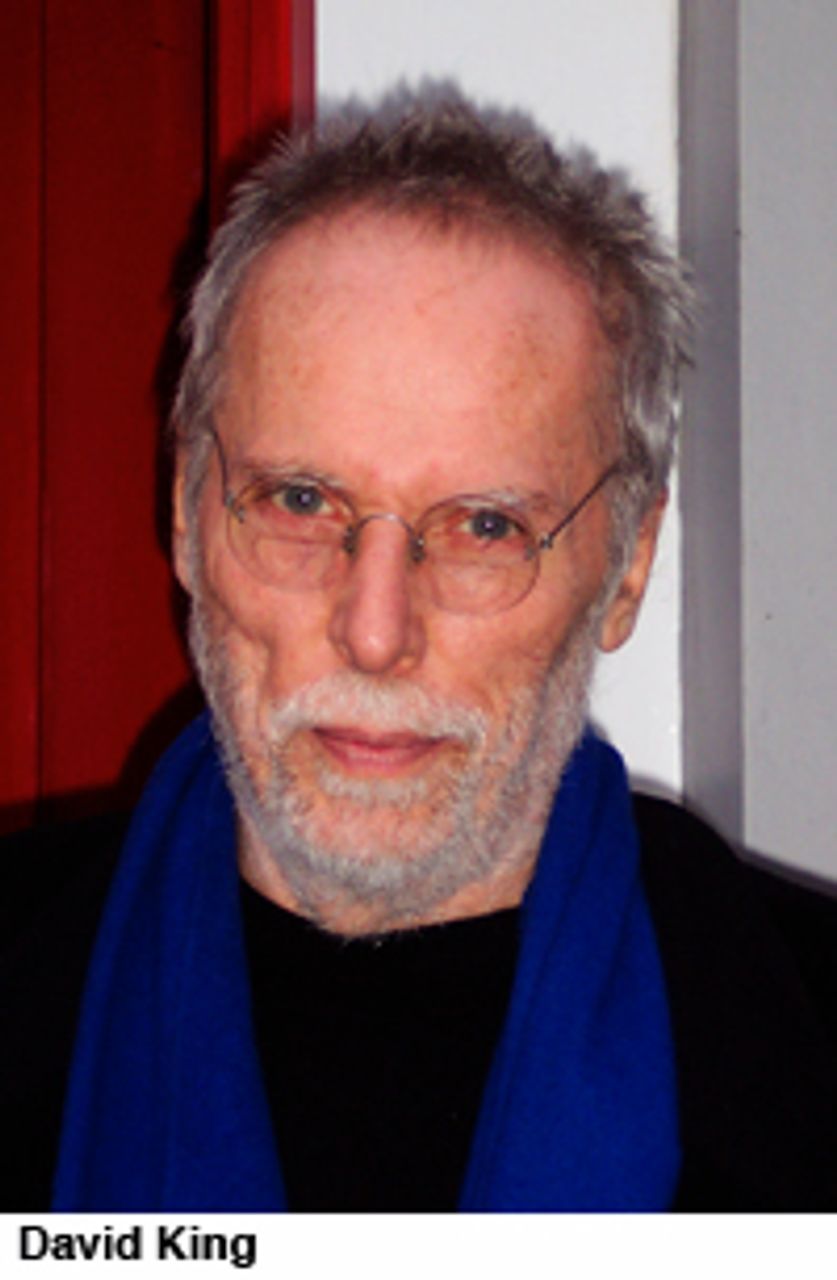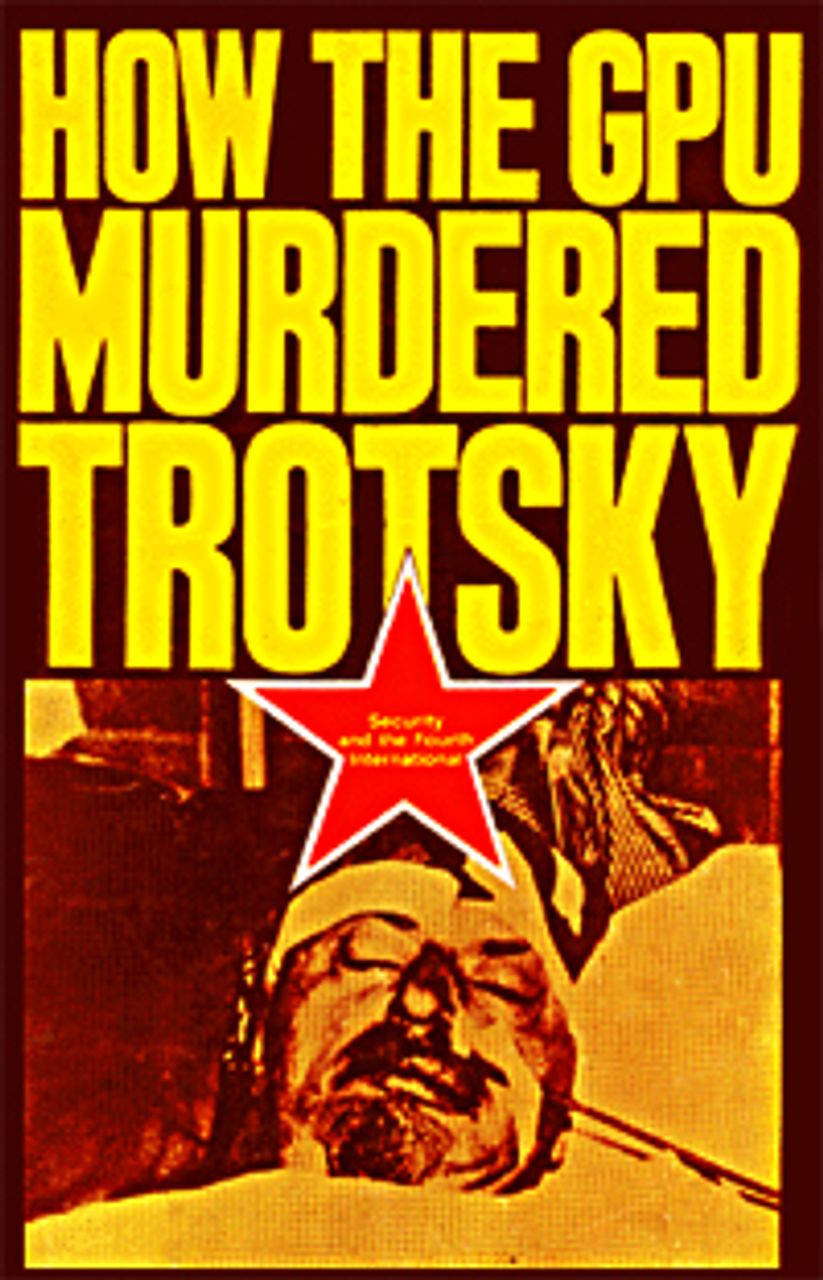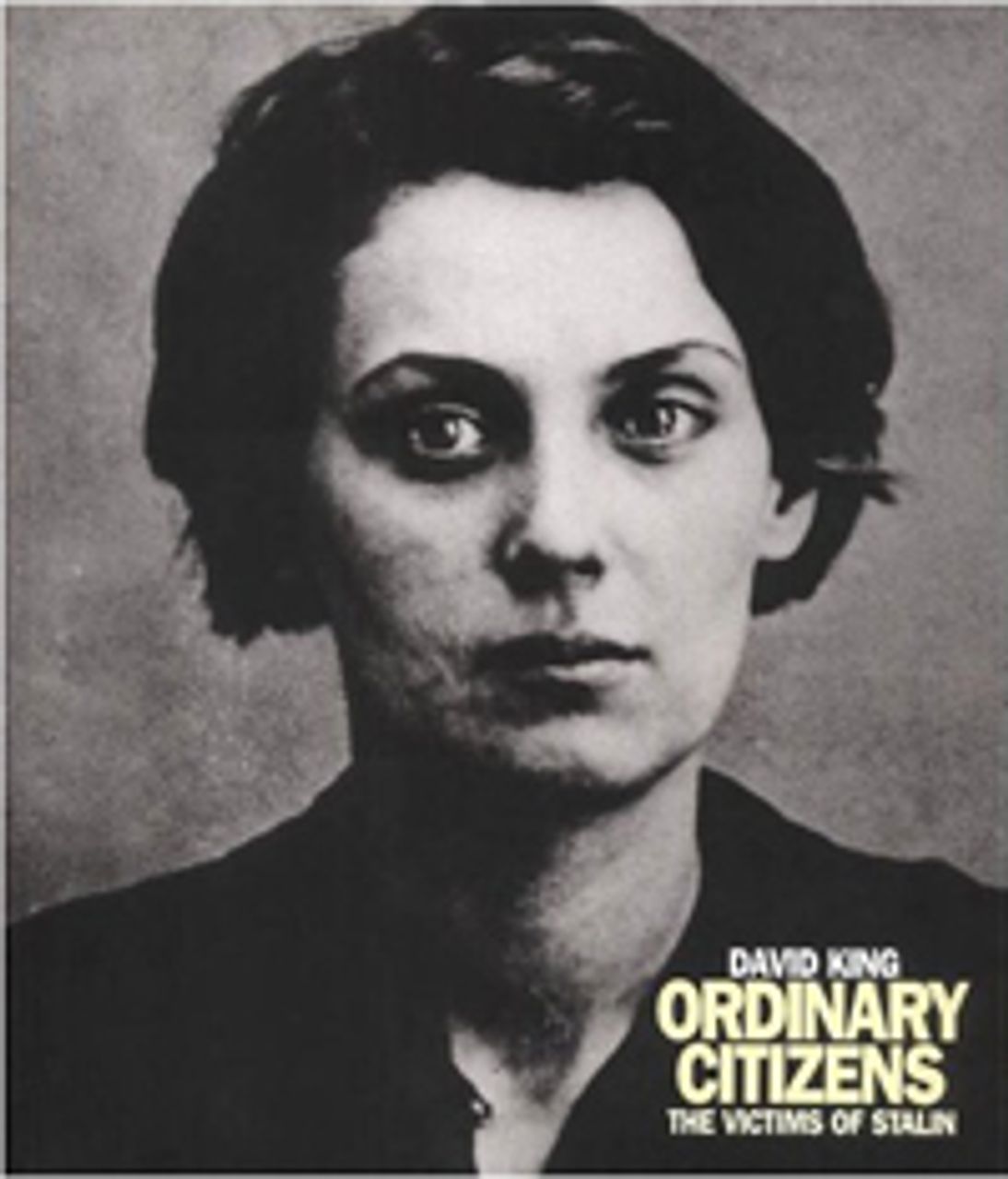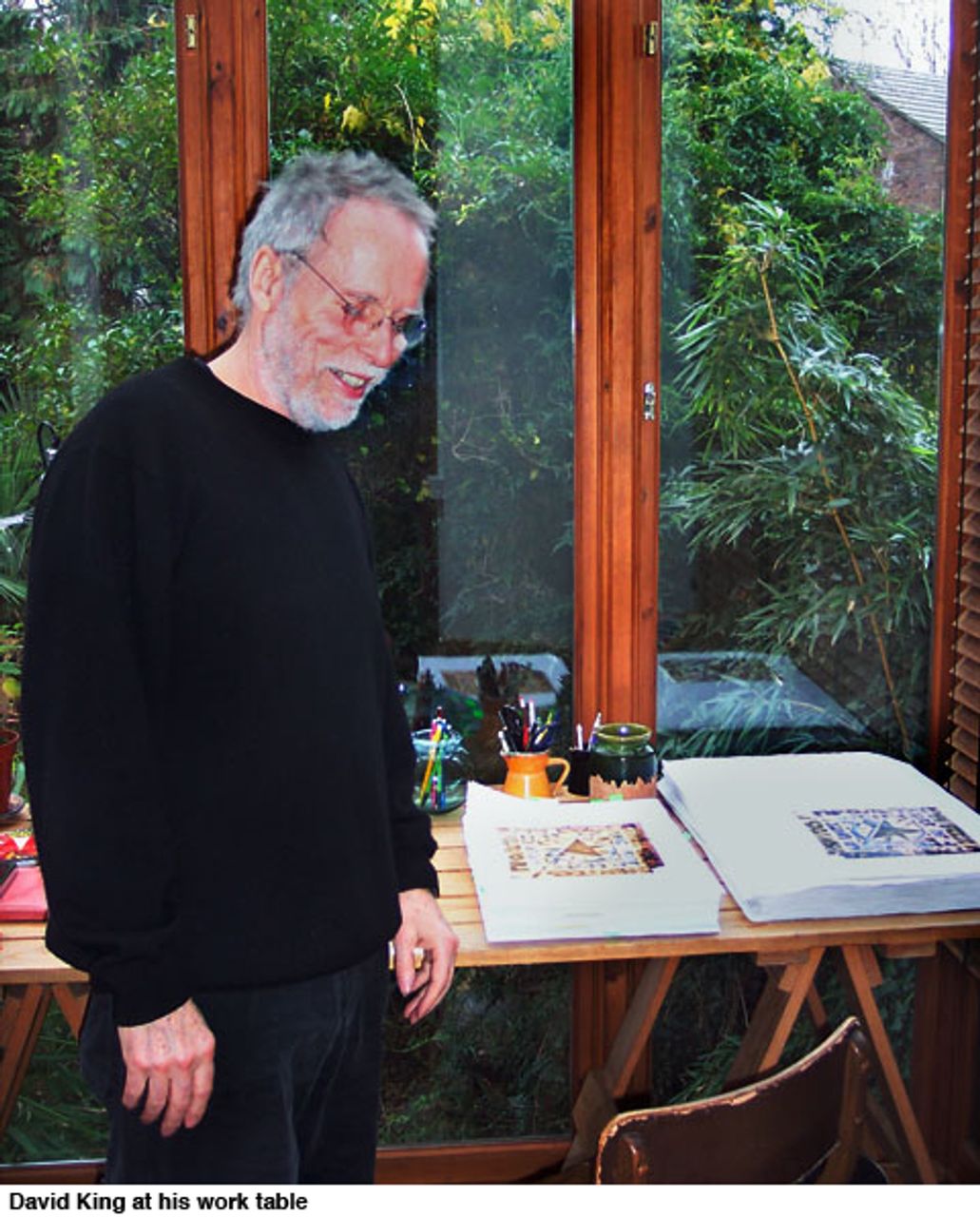As I have suggested elsewhere (see "San Francisco International Film Festival 2005—Part 3: There is no shortage of subjects"), David King—artist, designer, editor, photohistorian and archivist—is one of the most significant artistic-intellectual personalities of our time.

An indefatigable collector of images associated with the Russian Revolution, and Leon Trotsky in particular, King has accumulated more than 250,000 photographs, posters, drawings and other items over the past four decades.
Born in London in 1943 and art editor of the Sunday Times [of London] Magazine from 1965 to 1975, King designed Trotsky: A Documentary in 1972, with a text by Francis Wyndham, a large-format book that sold in the tens of thousands of copies. The work was part of, and helped encourage the revival of, the interest in Trotsky's life and ideas that grew out of the global political radicalization of the late 1960s and early 1970s.
Here already is the King style, described by one commentator as "an easily recognisable mix of explosive sans serif typography, solid planes of vivid colour and emphatic rules," a modern reworking of "the graphic language of the Russian Constructivists" (eyemagazine.com).
 Other books followed, many of them on similar themes. King designed How the GPU Murdered Trotsky, published by the International Committee of the Fourth International in 1976, which detailed the Stalinist plot against Trotsky's life and the operations of the deadly network of GPU agents in and around the Fourth International.
Other books followed, many of them on similar themes. King designed How the GPU Murdered Trotsky, published by the International Committee of the Fourth International in 1976, which detailed the Stalinist plot against Trotsky's life and the operations of the deadly network of GPU agents in and around the Fourth International.
King created a catalogue for a major retrospective exhibition devoted to the work of the great Soviet artist Alexander Rodchenko, edited by David Elliott, in 1979. He co-authored and designed Blood & Laughter: Caricatures from the 1905 Revolution in 1983. A year later, to a text by the late Isaac Deutscher, he designed The Great Purges. In 1986, King put together Trotsky: A Photographic Biography, demonstrating the exponential growth of his collection of images associated with the Russian revolutionary.
In The Commissar Vanishes (1997), King investigated and exposed the falsification of Soviet history practiced by the Stalinist regime, as inconvenient figures were excised from photographs and art works. King commented: "The physical eradication of Stalin's political opponents at the hands of the secret police was swiftly followed by their obliteration from all forms of pictorial existence."
In one notorious example (which appears on the cover of the book), a photograph of Stalin with three other Communist Party leaders (including Sergey Kirov) taken in the mid-1920s is worked over through the years, with all of the other figures eventually disappearing, finally leaving by 1940, in a painting based on the photo, only the gravedigger of the revolution.
In a tremendously powerful and chilling work, Ordinary Citizens (2003), King published in the West for the first time hundreds of mug shots taken by the Stalinist secret police and long stored in the Central Archives of the former KGB. All of those photographed were executed by the Stalinist regime, often shortly after the pictures were taken.
As King explained in his introduction: "In the following pages there are people from more than twenty countries, employed in over fifty different lines of work. There are engineers, artists, beekeepers, teachers and students, shopkeepers, factory workers, pilots, housewives, NKVD [one of the acronyms for Stalin's secret police] officials and heroes of the Soviet Union. Their trials, if they took place, were in absentia, and rarely lasted more than a few minutes; they were often sentenced and shot the same day."
The faces in this indispensable book are haunting. It's horrifying to read the brief accounts: "Born 1918 in Gorky. Transport worker.... Arrested on January 12, 1937. Sentenced to death by the Military Board of the Supreme Court of the USSR on July 21, 1937. The charge: participation in anti-Soviet terrorist groups. Shot the same day."
We read: "Born 1900 in Lodz, Poland. Communist Party member. Technician," "Born 1905 in Almora, India. Communist Party member. Assistant shop steward," "Born 1896 in Ulyanovsk. Non-party member. Housewife," "Born 1896 in Semyonovka, Zapadny region.... Head of the planning department, Tambov Factory No. 87.... Sentenced to death on October 5, 1936. The charge: Participation in a counter-revolutionary Trotskyist organization. Shot two days later."

Then there's the young woman on the book's cover: "Tamara Litsinskaya Born 1910 in Moscow. Non-Party member. Student. Address unknown. Arrested on February 8, 1937. Sentenced to death on August 25, 1937. The charge: Unknown. Shot the same day." You don't forget her face either.
The extermination of the most self-sacrificing and conscious elements of the population had devastating consequences for the Soviet Union and, indeed, far beyond its borders.
The mug shot of Grigory Zinoviev, Lenin's longtime comrade and defendant in the first Moscow show trial in 1936, included in the introduction, is especially memorable, and appalling. The photo reveals a man who has undergone unimaginable physical and mental torment, yet, while beaten and doomed, remains surprisingly defiant. Secret police photographs of poet Osip Mandelstam and writer Isaak Babel, both murdered by Stalinism, are also deeply disturbing.
King continues indefatigably to carry on with his work. A new book, Red Star Over Russia, is scheduled to appear early in 2009. It will be an artistic and intellectual event, as are all his major efforts.
Contacted by e-mail and telephone, David King was generous enough to agree to an interview. We met at the Tate Modern in London, the museum of contemporary art, which opened in May 2000. An entire room of the museum is devoted to King's Soviet posters, which range from evocative and lively celebrations of the revolution to hideous endorsements of Stalinist policy.
Also on display is a conté drawing (i.e., done with a hard drawing crayon made of clay and graphite) of Trotsky made in 1923 by Sergei Pichugin. The artist hid the drawing under a sheet of white cardboard for the rest of his life and his family only discovered it 75 years later.
Over lunch at the Tate Modern café, David King told me about his new book: "It's entitled Red Star Over Russia. It comes out in February. The book is a visual history of the Soviet Union from 1917 to the death of Stalin in 1953. It includes material, photos, posters, taken from my collection. I've been doing this for about 40 years.
"Red Star Over Russia is being published by the Tate in Britain. It's 352 pages. They're going to sell it for £25, in hard cover, which is very reasonable. In France, it's Gallimard, in the US, it's Abrams, the big art publisher."
He went on: "I've written a text, an introduction, explaining how I found the material. There are explanatory captions. The book works as a documentary, cinema verité, each spread treats a particular visual aspect of what happened in the USSR. The reader can contrast and compare with the official version of what took place. It's roughly chronological.
"One thing you might be interested in," King told me. "I obtained 50 of the mugshots of the defendants of the Moscow Trials. Zinoviev, Kamenev and some of the prominent victims, but also the lesser-known. [In the introduction to Ordinary Citizens, King had noted that the mugshots of the Moscow Trials defendants "are hidden to this day in secret archives, some of them in Siberia."]
"According to my sources in Russia, the defendants in the third Moscow Trial, Bukharin, Rykov and the others, were never mugshotted, they used their passport photos. This is what they told me, and I have no way of verifying or disputing it.
"So there are the mug shots of Zinoviev, Kamenev, Radek, Sokolnikov, but also minor characters. The lesser-known victims. Some of these individual shots have been viewed, but never the entire bunch. The mugshots were hidden in an archive in Omsk, in a former GPU archive.
"I have everybody from the first trial, and everybody from the second trial. And a substantial group from the Bukharin trial. As I said, I was told that the authorities used his passport photograph. Also, Yegoda, the former secret police chief. It was his GPU photograph they used."
 How had King sustained himself intellectually after the collapse of the Soviet Union and "the end of socialism," indeed, "the end of history"?
How had King sustained himself intellectually after the collapse of the Soviet Union and "the end of socialism," indeed, "the end of history"?
"Oh, I never believed any of that. And look what's happening now, with the financial crisis!" I suggested that it might be a very good time to publish his new book, with a revived interest in alternatives to capitalism. Five years ago, the book might have received a different reception....
We discussed some of the problems in the development of the Fourth International and the crisis inside the Workers Revolutionary Party, the British Trotskyist movement, in the 1980s.
I asked King about the origins of his interest in Trotsky and the October Revolution. "How did I start? I worked for the Sunday Times, and I traveled widely. I was taking photos, collecting photos. I was always interested in left ideas, in socialism. I wanted to get the ideas of socialism across visually to a much wider audience, a much wider audience than there seemed to be at the time. And it's continued.
"I began 40 years ago collecting material out of an overwhelming interest in discovering the truth about what happened to the Russian Revolution and the Soviet Union. I wanted to uncover, through visual means, what happened, to collect visual evidence.
"Suddenly in the late 1960s here, everybody was interested in Trotsky and one or two other figures, as major alternatives to Stalinism. There was a crisis, and people were looking for alternatives. I determined to find out what really happened to Trotsky, who he was."
King speaks passionately about these matters. "When I was growing up, everything to do with the USSR was cloudy, mysterious. I was intrigued. By the time I started on the first book, in 1970, with Francis Wyndham, it was like opening up Pandora's box. In the USSR, I'd ask ‘What do you have on Trotsky?' Trotsky didn't exist. ‘Trotsky was a fascist,' etc. It was crazy.
"I hunted around the world, while working for the Sunday Times, searching every second-hand bookshop, library, tracking down friends, relatives of Trotsky. I was trying to piece together the real history.
"When I showed Francis Wyndham the material," King commented laughingly, "he said that far from there being no pictures of Trotsky, there were more pictures of him than Marilyn Monroe.
"After that, I started to work in a wider way, with a broader perspective. I became interested in examining the entire Soviet experience. The Stalinist stuff was also banned in the USSR at the time."
He concentrated his thoughts. "All of this work took on a life of its own. It became an all-consuming passion. It ran my life. Uncovering this history continues to run my life.
"When I began collecting the material, no one outside the Trotskyist movement was interested. ‘Why are you spending your money and your time on this stuff?' "
Obviously, King doesn't feel he wasted his time. We are all the more fortunate for that. Interest in his collection has been affected by the vicissitudes of recent history.
"At the time Gorbachev came to power in 1985," he explained, "and the general rehabilitation of various figures in the late 1980s, people began calling me up from all over the world. ‘Do you have a photo of Lenin?' and so forth.
"In the West, they used to crow that history books were constantly being rewritten in the Soviet Union. But they did it here too! People came to me for photographs, images.
"As I say, after 1991 [and the end of the USSR], I never believed any of that," he scoffed. "The end of history! Stupid stuff.
"The post-Soviet historians, like Richard Pipes, begin from the premise that there never was an alternative to Stalinism. That's false. My collection also proves that the claim is false. I can't imagine being Pipes, spending his life writing about the Bolsheviks, something he hates. It must be awful to be in his head."
King later invited me to his house in north London and allowed me to see a proof copy of Red Star Over Russia. I was able to leaf through the 350 or so pages of the new book. There are many extraordinary images, including the aforementioned mugshots of the victims of the Moscow Trials. There are also beautiful, vivid photographs of the early days of the revolution, among them a remarkable shot of a session of the council of People's Commissars from 1918, in which we see Trotsky, Zinoviev, Uritsky and others.
Visually, historically, politically, the new book is an important work. I was pleased to have seen the book and met David King. Along with everything else, he is a lovely person.
